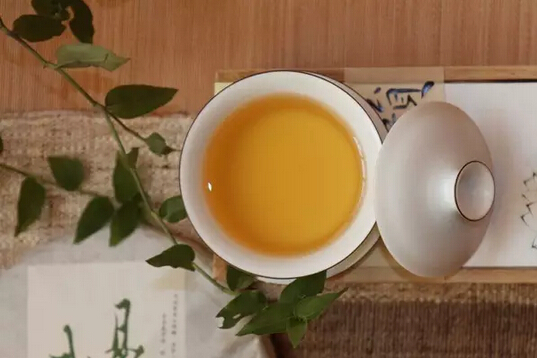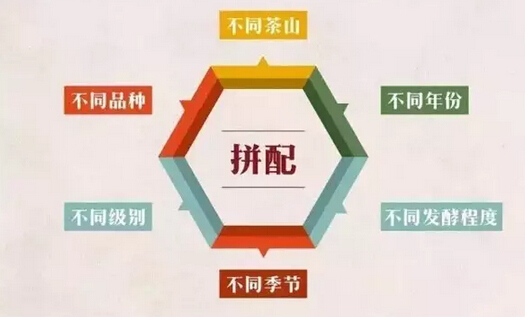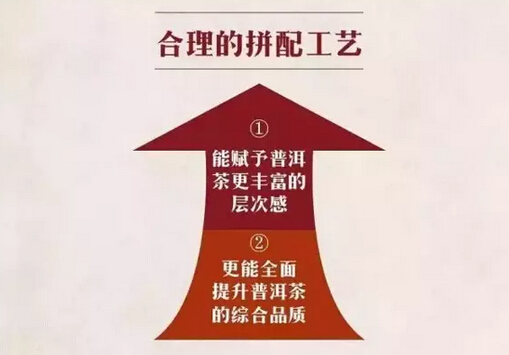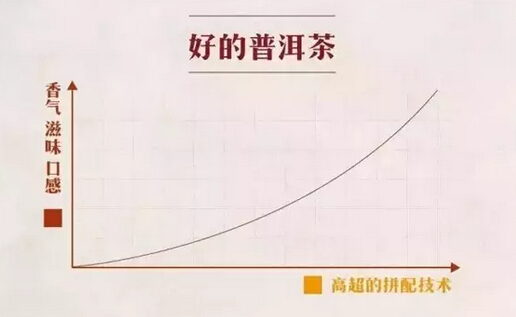When it comes to the blending of tea, it often brings to mind the idea of 'passing off inferior products as superior ones.' But is this really the case?

Terms like 'single-origin, one-batch material, ancient tree tea, no surface sprinkling' might evoke excitement for those new to Pu-erh tea. Compared to the straightforward meaning of 'single-origin,' misunderstandings about 'blending' are far more common.

The Meaning of Blending
▼
As a traditional processing technique for Pu-erh tea, blending can be broadly categorized into six types: blending teas from different mountains, varieties, grades, seasons, years, or fermentation levels.
The purpose of blending Pu-erh tea is to achieve 'complementary advantages' between different teas. The Yunnan large-leaf tea-producing region is vast, and teas from different areas vary in their intrinsic components and nutritional content. Additionally, processing and other human factors can lead to significant differences in taste. With proper blending techniques, not only can Pu-erh tea gain richer layers of flavor, but its overall quality can also be comprehensively improved.
While it's difficult to provide a complete definition of 'blending technology,' it's undeniable that every advanced blending technique is formed through deepening understanding of Pu-erh tea and repeated blending practices.
In a sense, it is the existence of various mature blending techniques that allows more tea lovers to enjoy Pu-erh tea.
The Purpose of Blending
▼
One of the earliest explorers, researchers, and important practitioners of Pu-erh tea production using the pile-fermentation method in China—Mr. Zou Bingliang—pointed out in his article 'The Purpose of Blending Pu-erh Tea' that the purpose of blending can be summarized in 12 words: 'Highlight strengths, conceal weaknesses, and balance highs and lows.'

Highlight Strengths: Mainly refers to showcasing the robust, full-bodied, and sharp characteristics of Yunnan large-leaf tea.
For example, overall, spring tea produces refined tea with a solid body and rich flavor, while summer and autumn teas produce lighter, less clean, and less flavorful refined tea. Additionally, teas from different regions have their own pros and cons in terms of aroma, taste, and appearance. Before blending, teas from different regions and seasons must be separated. Based on the product's characteristics, the goal is to maximize strengths, overcome weaknesses, and highlight the product's style.
Conceal Weaknesses: Mainly refers to adjusting the 'strengths' and 'weaknesses' of semi-finished products.
Semi-finished products are single-machine sieve-grade teas. Due to differences in raw material regions, grades, seasons, mountainous areas, and fermentation levels, sieve-grade teas vary in size, length, thickness, and weight, resulting in varying quality levels—some higher, some lower, some better, some worse. For any given sieve-grade tea, when evaluated against the eight factors of tea tasting, some factors may be strong (advantages), while others may be weak (disadvantages). Blending aims to highlight the strengths of sieve-grade teas as much as possible.
Balance Highs and Lows: Based on standard samples, trade samples, or transaction samples, the goal is to balance quality by adjusting high-quality teas downward and low-quality teas upward.

Due to differences in tea regions, seasons, mountains, and sorting purity, tea quality can vary significantly, necessitating balance. For example, in the initial processing (pile fermentation) of Pu-erh tea, without the use of instruments or computers to control fermentation today, factors like temperature, humidity, air, altitude, water quality, tea moisture content, and raw material storage time inevitably lead to inconsistent fermentation levels. This results in batches with varying quality, aroma, taste, liquor color, and leaf appearance, sometimes causing vast differences in flavor. Balancing is essential throughout the blending process to ensure relatively stable product quality.
'Blending' Is Like a Chef Cooking
▼
Just as a chef prepares a dish, blending Pu-erh tea requires considering differences in raw material regions, grades, seasons, mountainous areas, and fermentation levels, as well as the quantity of the final product. The blended tea must then be tasted by many to determine its suitability for drinking before scaling up production. Any oversight may require starting over.
A delicious dish requires not only different ingredients but also various seasonings, occasional spices, and the support of knife skills and heat control. Similarly, tea made entirely from leaves picked from the same tree at the same time, brewed with suitable water, temperature, and methods, may result in a great cup of tea.
As for unscrupulous manufacturers who use blending techniques to cover inferior tea with a layer of good tea for profit, such practices are not the 'blending' technology we advocate.